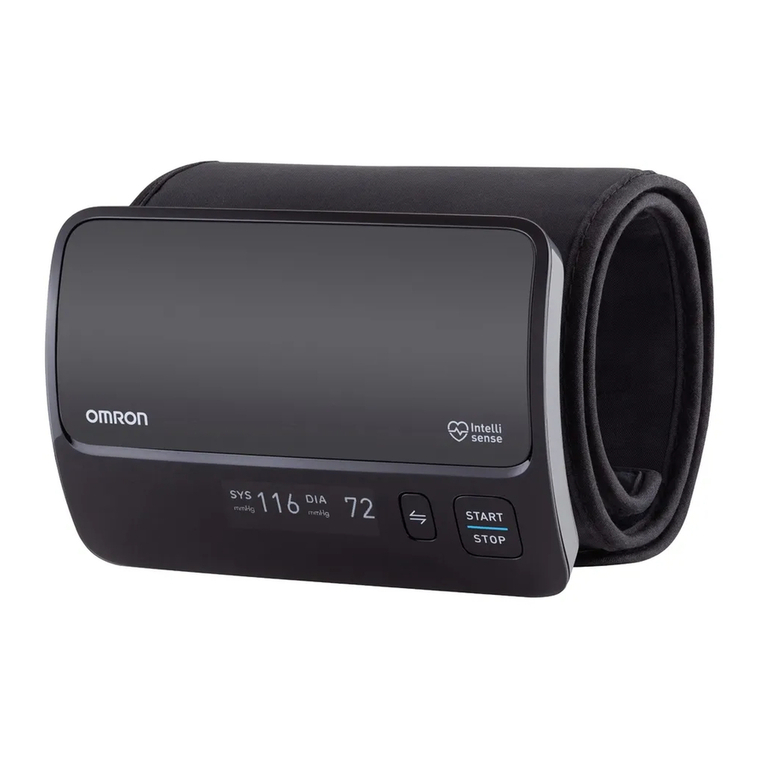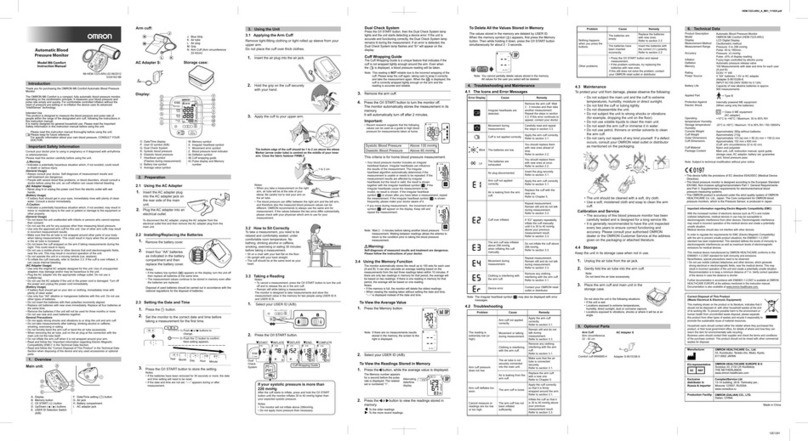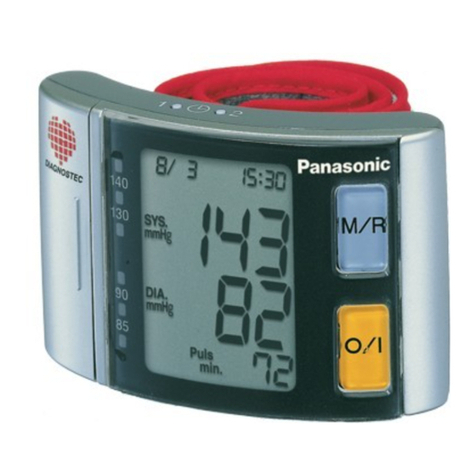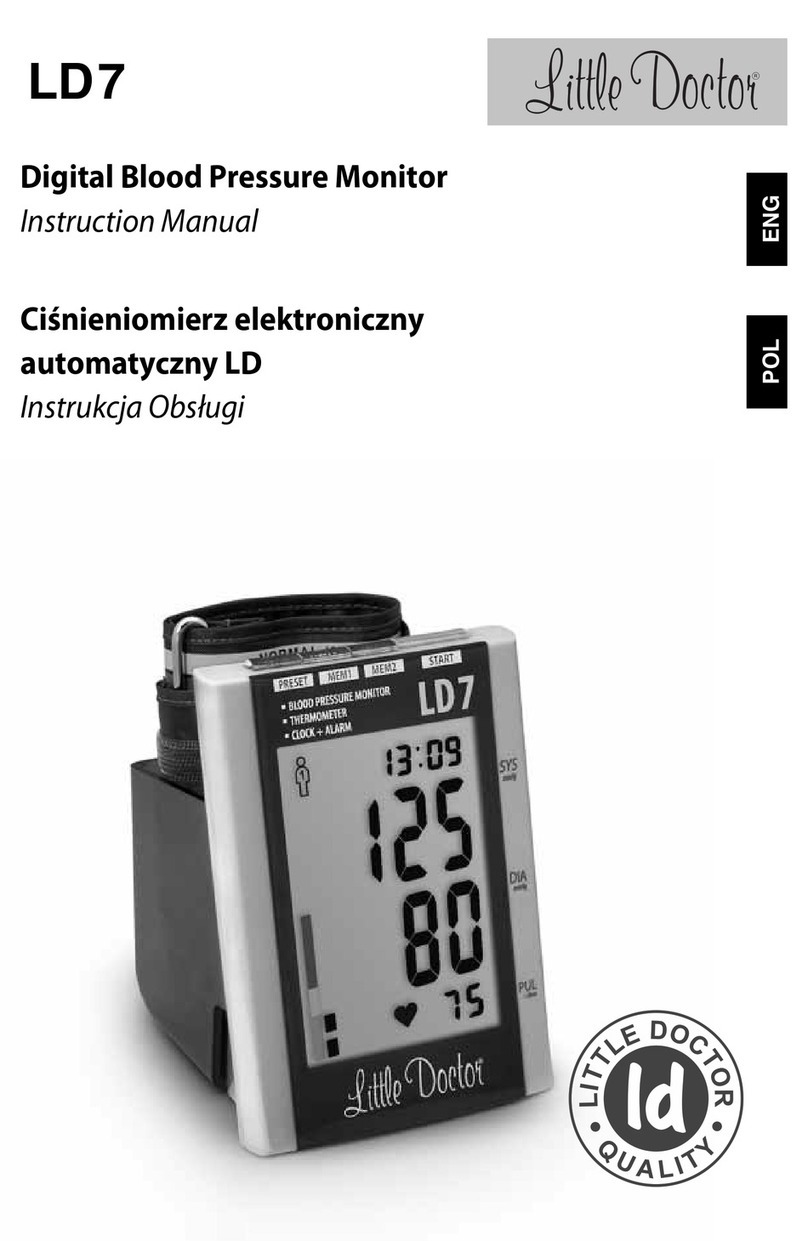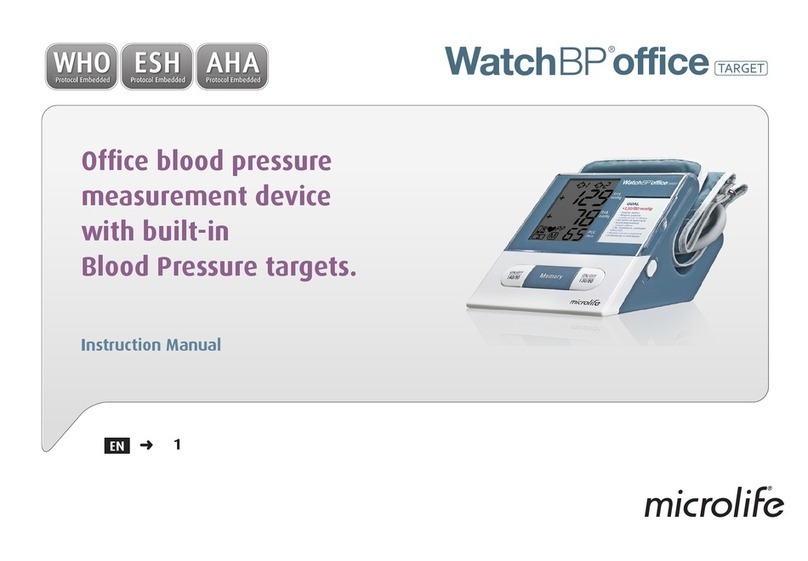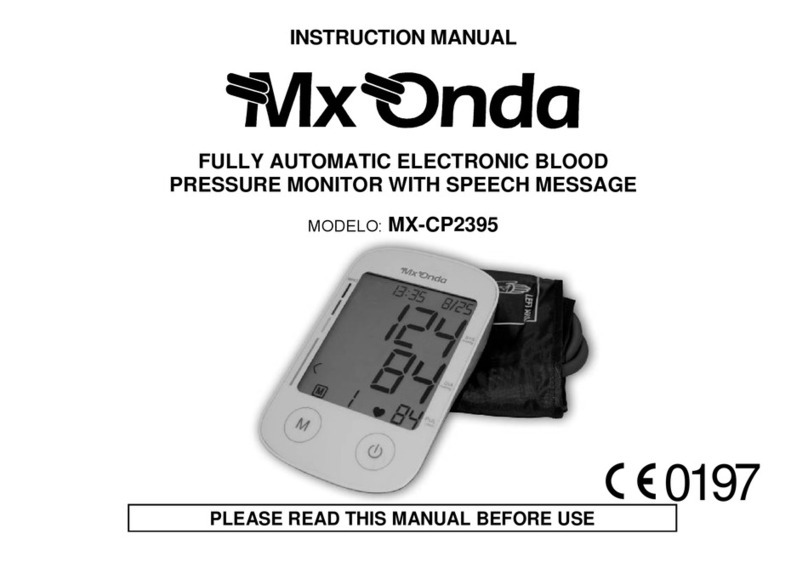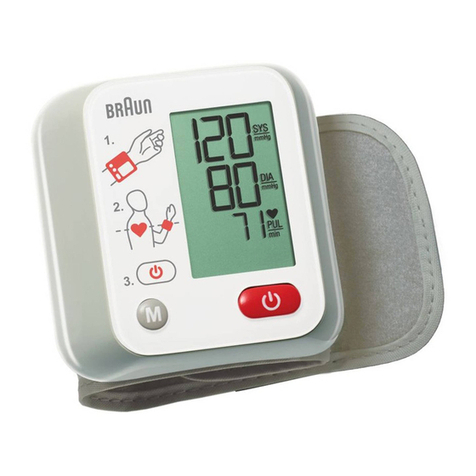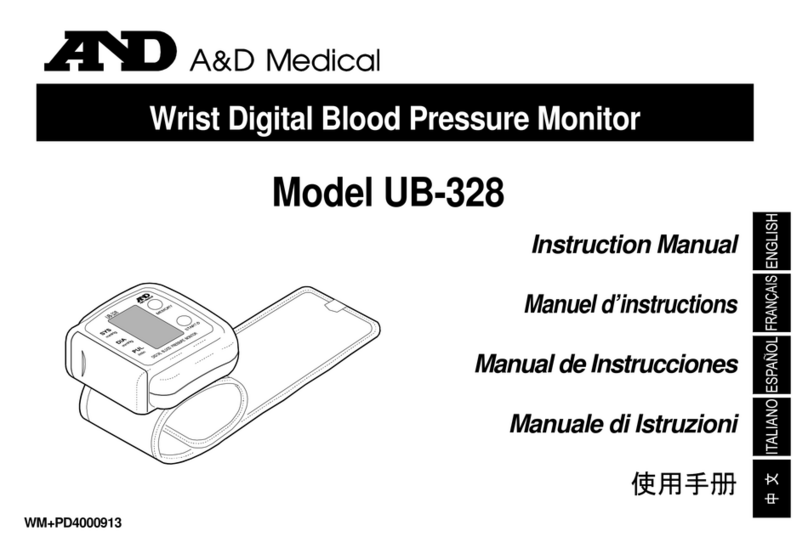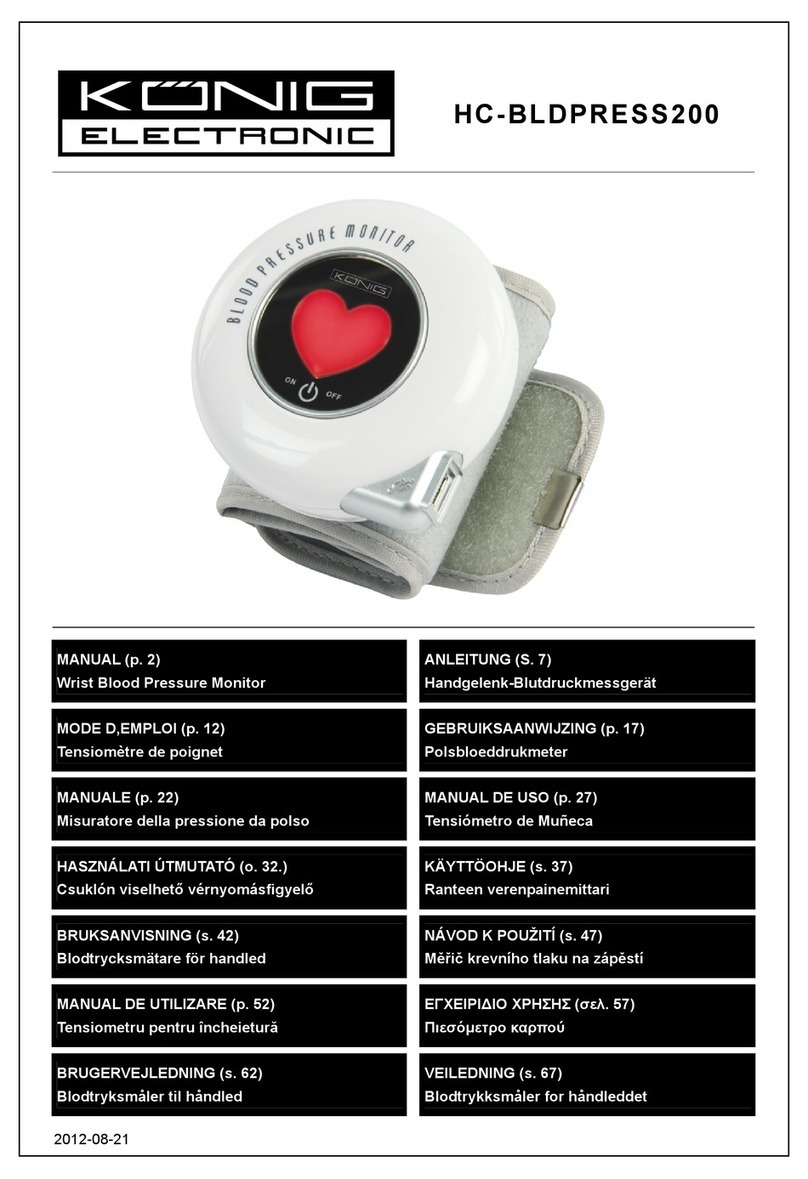Omron HEM-9200T User manual
Other Omron Blood Pressure Monitor manuals
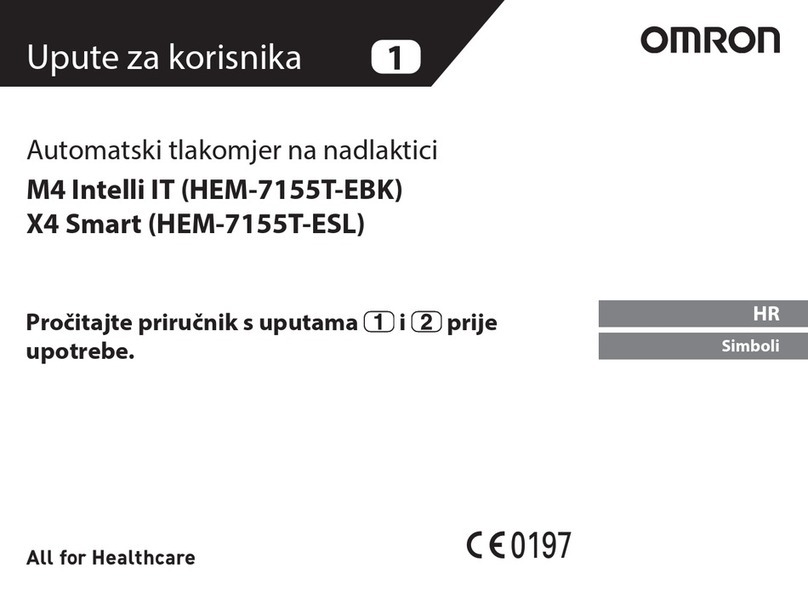
Omron
Omron HEM-7155T-EBK User manual

Omron
Omron BP7250CAN User manual
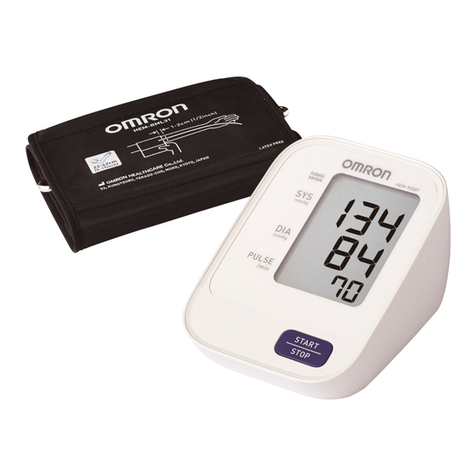
Omron
Omron HEM-9210T User manual
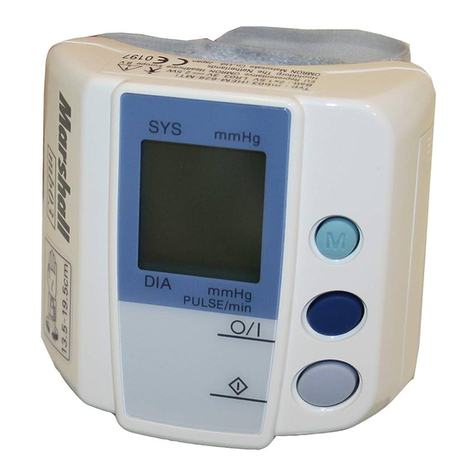
Omron
Omron HEM-629 User manual

Omron
Omron RS8 User manual

Omron
Omron HEM-CS19 User manual

Omron
Omron HEM-7156-A User manual
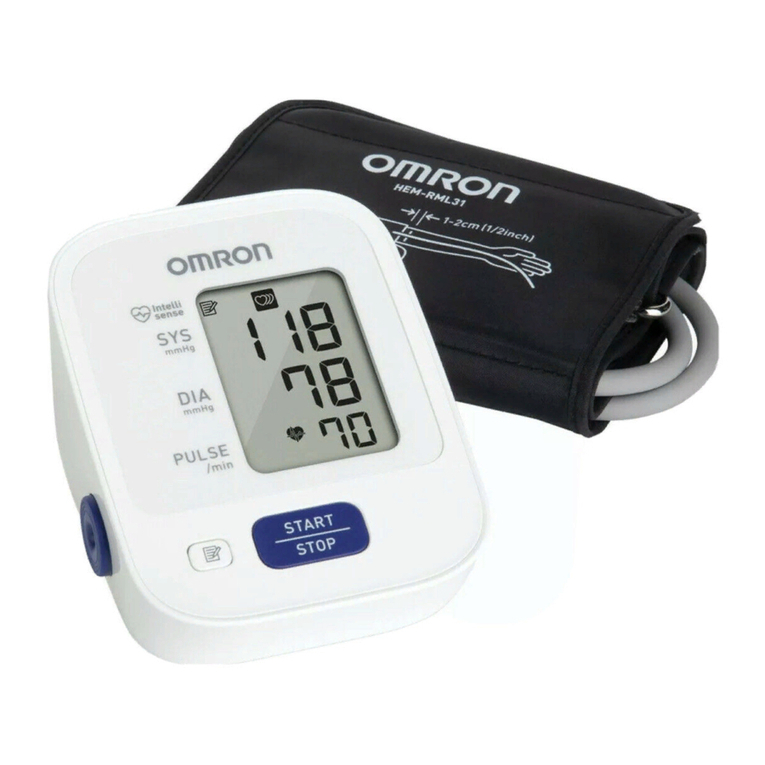
Omron
Omron 3 Series User manual

Omron
Omron BP652 User manual
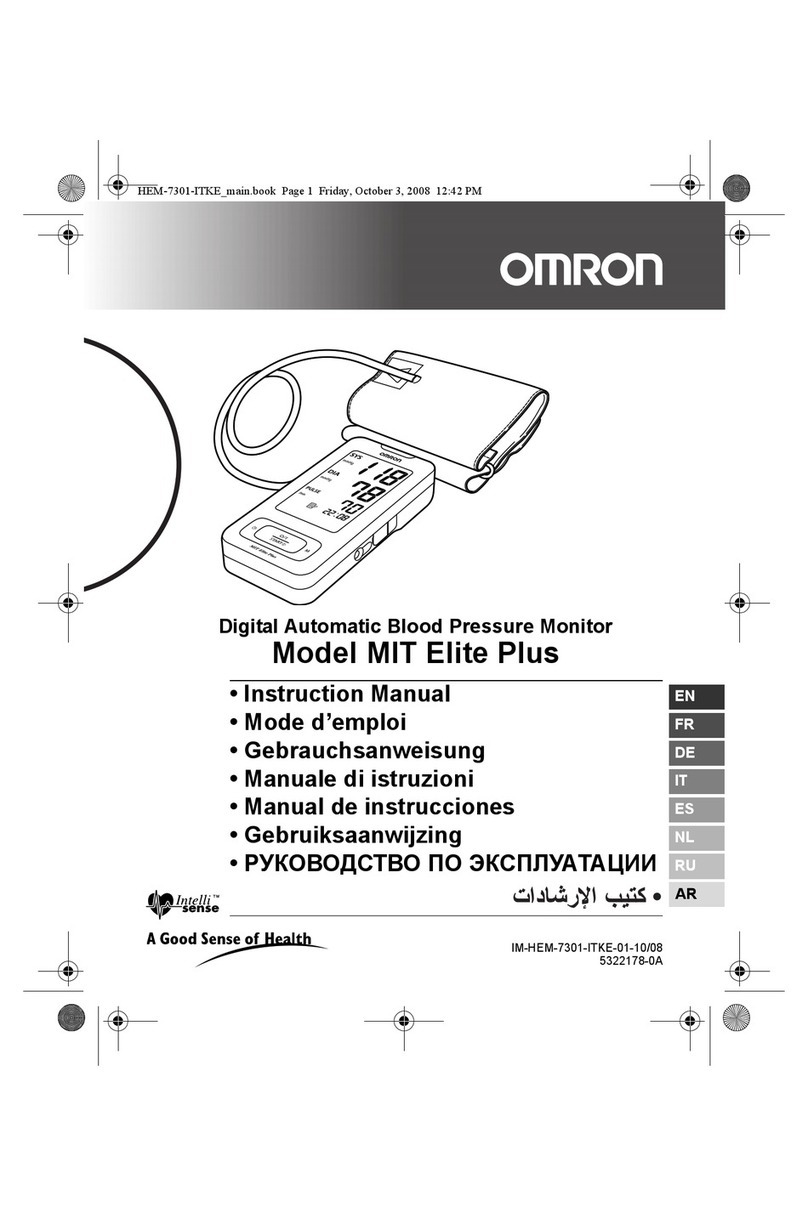
Omron
Omron MIT Elite Plus User manual

Omron
Omron BP710N User manual
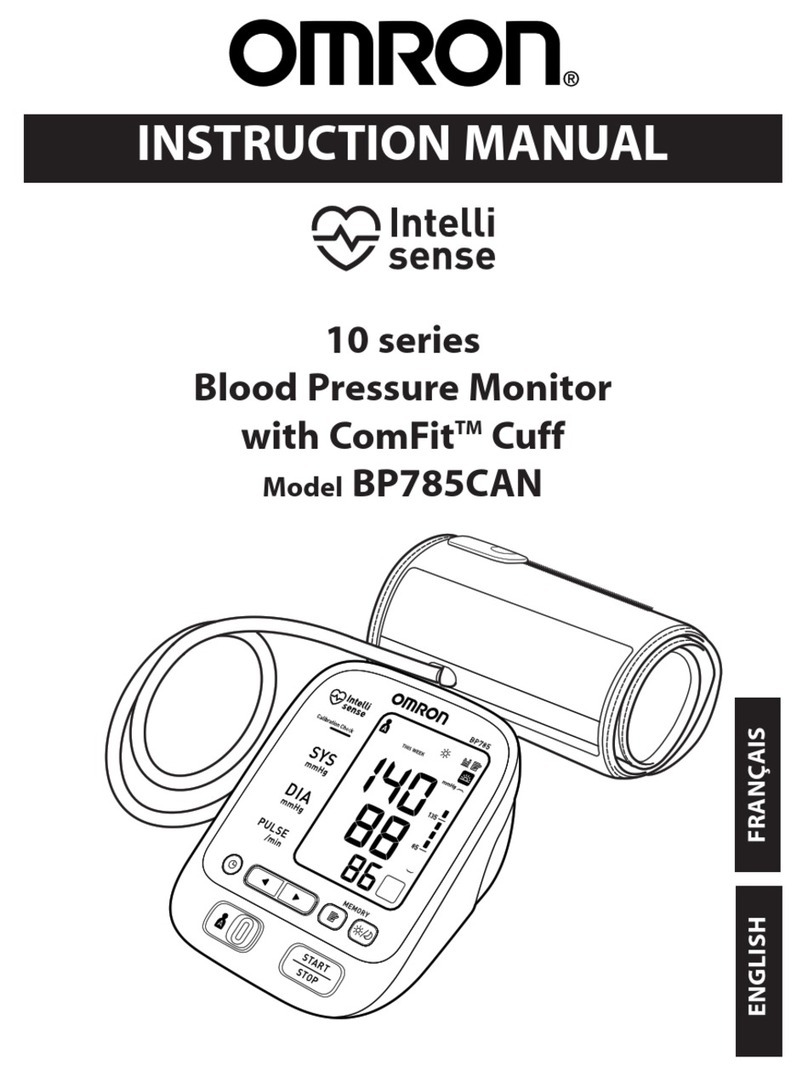
Omron
Omron Intellisense BP785CAN User manual

Omron
Omron R2 User manual
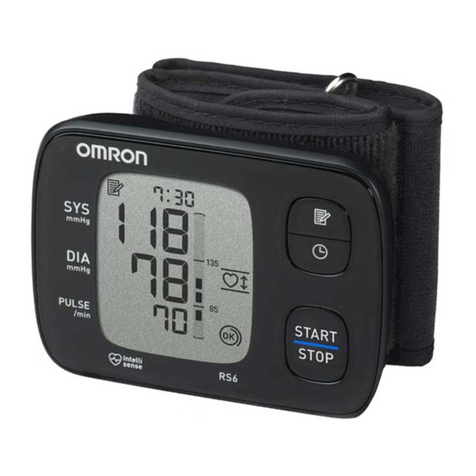
Omron
Omron RS6 User manual
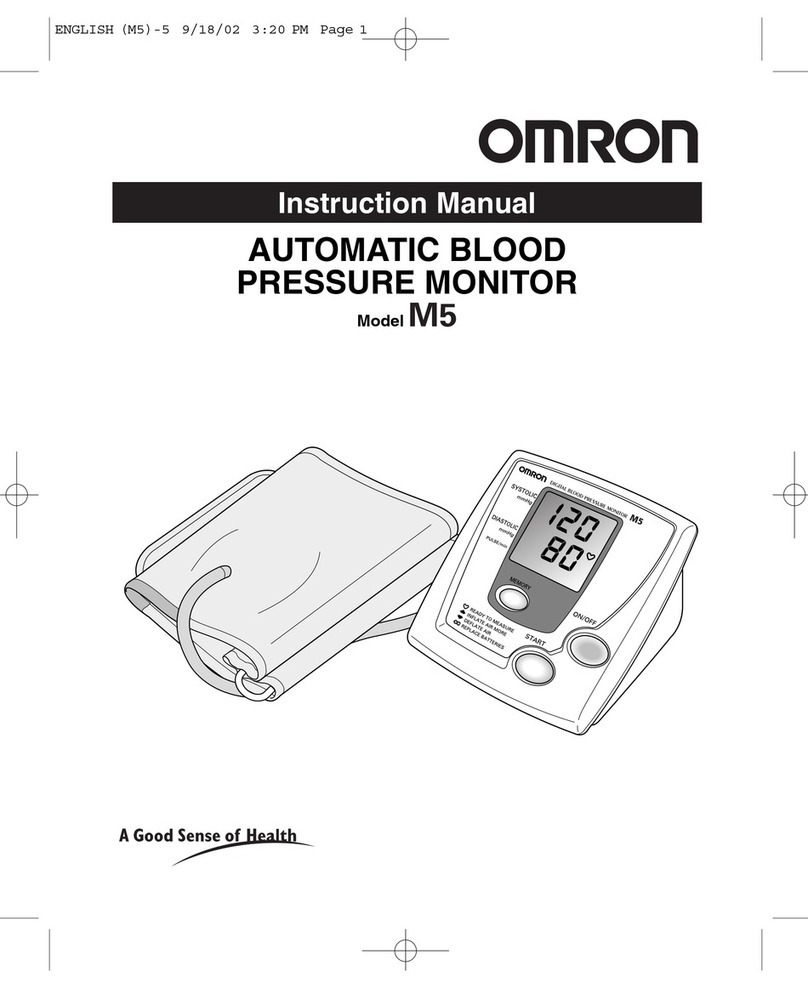
Omron
Omron M5 User manual

Omron
Omron M6 Comfort User manual

Omron
Omron BP654 User manual
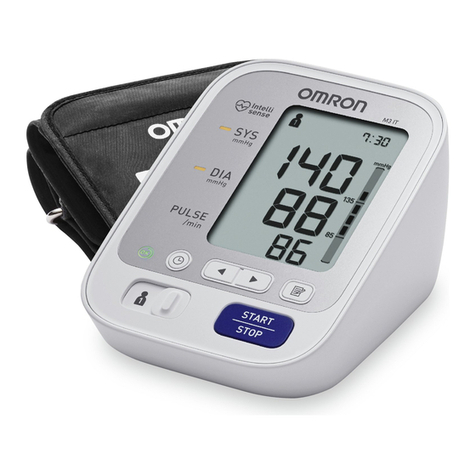
Omron
Omron M3 Intellisense User manual
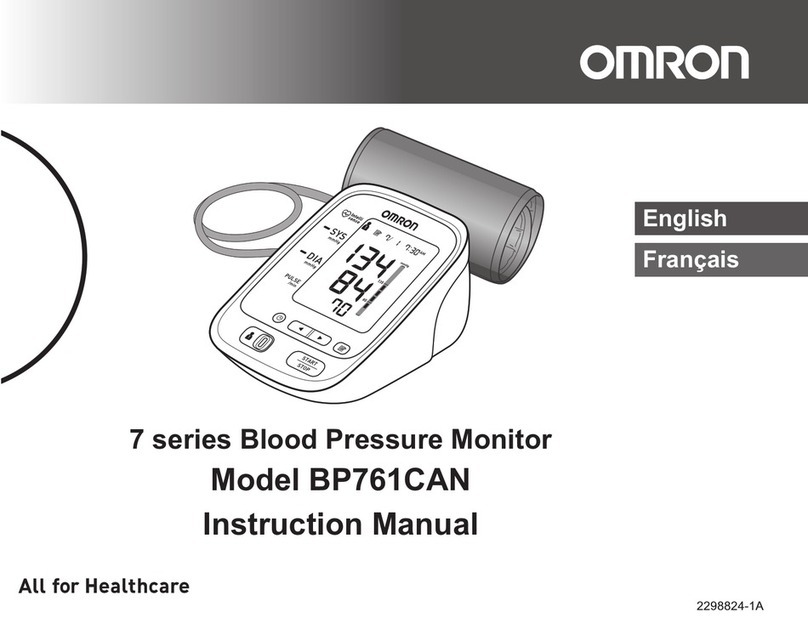
Omron
Omron HEM-7320T-CA User manual
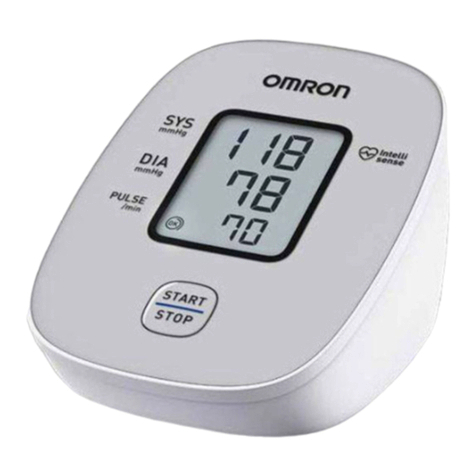
Omron
Omron M2 Compact User manual
Popular Blood Pressure Monitor manuals by other brands
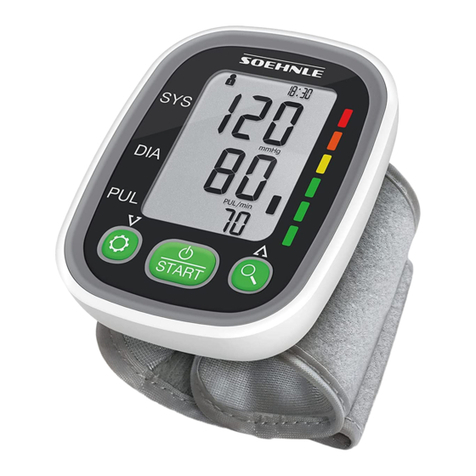
Soehnle
Soehnle SYSTO MONITOR 100 Instructions for use

Nasco Healthcare
Nasco Healthcare Simulaids Life/form LF01095U USER HELP GUIDE

Microlife
Microlife WatchBP office instruction manual

HoMedics
HoMedics MiBody 360 instruction manual

ForaCare
ForaCare FORA P30 Plus owner's manual
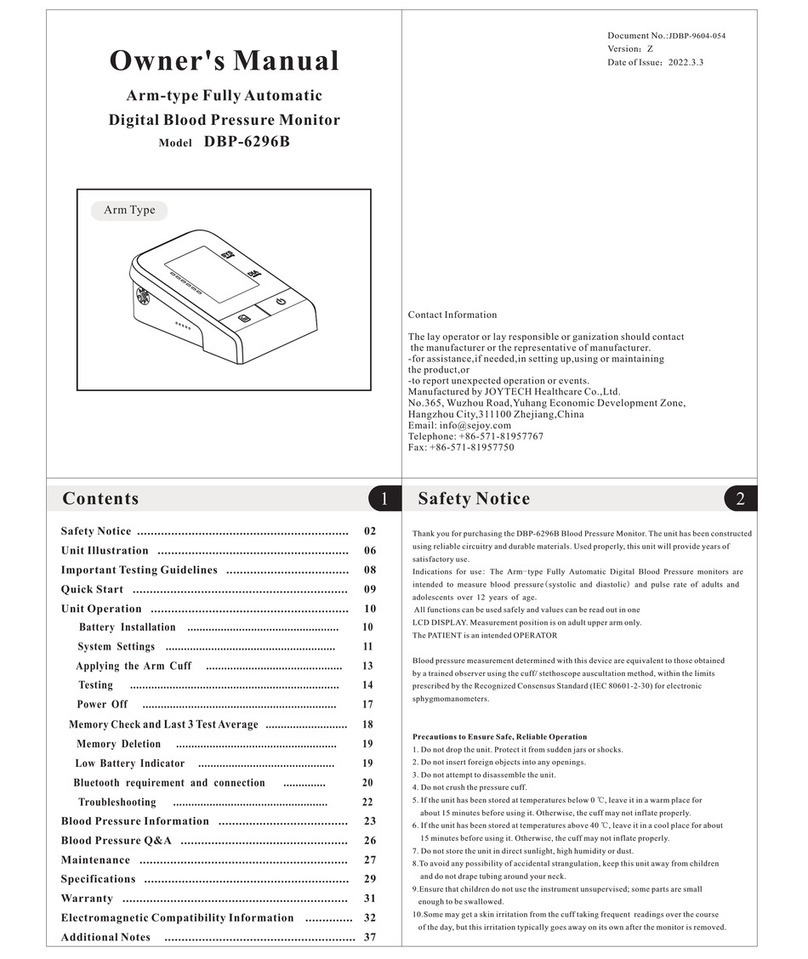
JOYTECH
JOYTECH DBP-6296B owner's manual


